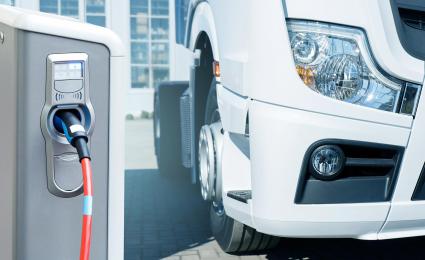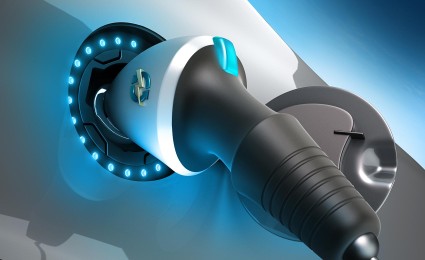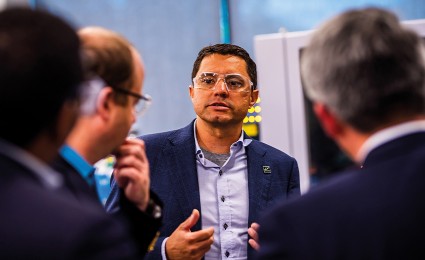Elevate your business with our automobile consulting services. We provide expert advice, tailored for industry professionals seeking efficiency.


The electrification of light vehicles
Is the transition from ICE to electric vehicles on Europe's roads a boon or a bane for the automotive aftermarket?
The automotive industry is experiencing rapid transformation. One particular trend – the electrification of light vehicles – has been high on the agenda of automotive executives for several years already, and with the European Council's recent confirmation of the proposed regulation to only allow new cars and vans with zero CO² emissions from 2035, the direction of travel for the automotive industry is clear. For players in the aftermarket, this presents particular challenges – even after 2035, a large number of vehicles with internal combustion engines (ICEs) will remain on Europe's roads. The reasons: Battery-electric vehicles (BEVs) have around 30% lower demand for traditional aftermarket components and BEV sales forecasts project a 53 to 82% market share in 2030. What can players in the aftermarket do to master the challenges? And how can they best position themselves to capture the opportunities?

"ICE vehicles will not disappear from our roads any time soon. However, independent aftermarket players need to take appropriate action early – or risk losing the battle for the BEV aftermarket to OEMs entirely."
A multitude of drivers
In fact, the electrification trend is not driven by legislation alone. European consumers are increasingly turning to electric vehicles, driven by factors such as burgeoning environmental awareness and the superior total cost of ownership (TCO) offered by battery-electric vehicles (BEVs) compared to traditional ICE vehicles. Manufacturers are also shifting the focus of their line-ups and have already made significant investments in developing a BEV product portfolio, unveiling electrification plans in line with or exceeding the EU's Fit for 55 targets. As a result of these many factors, BEVs grew from around one percent of new vehicle sales in Europe in 2017 to nine percent in 2021. And according to data on selected European countries in the Roland Berger Automotive Disruption Radar, the share of potential new vehicle buyers considering a BEV rose from 33 percent in January 2020 to 50 percent in July 2022.
3 scenarios
We have created three scenarios for how sales of new light vehicles in Europe may develop and what that means for the overall structure of the vehicle parc: Regulatory Compliance, Ambitious Transformation and Radical Electrification.
In the Ambitious Transformation scenario, the share of BEVs and fuel-cell electric vehicles (FCEVs) in the total vehicle parc reaches 17 percent in 2030, 35 percent in 2035 and 52 percent by 2040. Based on our calculations, in this bullish scenario BEVs and FCEVs overtake ICEs in the European light vehicle parc by 2039.
Shifts in demand
To estimate the impact of electrification on aftermarket demand, we analyzed a total of 250 components along 53 systems in the five core vehicle domains: chassis, drivetrain, engine, interior and exterior. Overall, on a per vehicle basis, we calculate that BEVs have around 30 percent lower revenue potential from aftermarket replacement parts than ICE vehicles for traditional aftermarket components (to highlight the impact of electrification, we exclude any additional demand for new components and services and the impact of macro factors such as overall growth of the vehicle parc and inflation). The reason for this lower revenue potential lies mainly in the fact that BEVs have fewer components in total and cause less wear in the engine and drivetrain domains and in brake components. Total revenue potential for traditional aftermarket components in the European aftermarket is thus expected to fall by five percent by 2030, 11 percent by 2035 and 16 percent by 2040 in the Ambitious Transformation scenario.
"Electrification also opens up new opportunities along the value chain for the various suppliers in the industry. Parts manufacturers, for example, can shift their portfolio to battery-specific components but also expand their business model by remanufacturing or refurbishing components."
Challenges along the value chain
For workshops, electrification creates the need to invest in adapting facilities for electric vehicles. This could cost up to EUR 200,000 in the case of OEM-authorized workshops. Specialized independent aftermarket (IAM) workshops will not be majorly impacted by electrification, but general IAM workshops will face significant investment, training and hiring challenges. This may lead to increasing consolidation in the market, or collaboration within repair networks that benefit from the support of parts suppliers or wholesalers.
Wholesale distributors will play a crucial role in supporting IAM workshops in the transition to servicing BEVs. The lower parts demand of BEVs will negatively impact revenue potential for wholesale distributors; at the same, the size and complexity of their product portfolio will increase, as they will now have to carry both BEV and ICE components.
Parts manufacturers will face a range of different challenges depending on their product portfolio, level of vertical integration and degree of investment in technology. For example, traditional domain specialists will need to engage in highly proactive product portfolio management, deciding as early as possible whether to exit their product group or pursue a "last man standing" strategy.
Opportunities abound
But along with the challenges come opportunities – from offering new products and serving new customer groups to engaging in training and collaboration. For example, workshops that choose to focus exclusively on BEVs can either attract their own customers and offer services to generalist workshops in their area, or they can offer their services directly to new EV OEMs (who may be looking for IAM workshop partners to strengthen their service network). Wholesale distributors have a number of new opportunities, such as assisting in the reverse logistics and management of end-of-life components for workshops, becoming providers of post-consumer, automotive-grade recycling feedstock.
For parts manufacturers, the obvious opportunity is to expand their product portfolio to include BEV-specific components, positioning themselves as trusted, long-term partners for workshops. In fact, although e-mobility may initially seem like bad news for the European aftermarket, we believe that it opens up many doors for savvy players that react quickly to the new challenges and adapt their business model to capture the new opportunities.
Register now to download the PDF on “The electrification of light vehicles” and learn more about upcoming challenges of the European automotive aftermarket.







